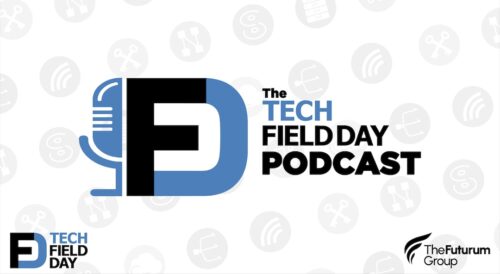Data migration is a thankless task that needs to be performed periodically during hardware refreshes, and of course, regularly to keep expensive storage systems tidy. Fortunately, for traditional block-based workloads, the introduction of technologies like server virtualization have taken most of the pain out of the process. However, migrating unstructured data still seems to represent a challenge. As a result, we see solutions from companies like Hammerspace and Komprise looking to both ease the process and take advantage of hybrid multi-cloud configurations. In this piece Chris Evans looks at what both companies presented at Storage Field Day to held meet this challenge.
Fixing the X86 Problem
Much like the IBM Mainframes that preceded it, the x86 architecture is getting long in the tooth. While still ubiquitous across enterprise and consumer devices, the once standard architecture is seeing competition at all sides, as performance scaling and process enhancements have slowed. Chris Evans highlight Persando’s presentation from Cloud Field Day as an example of this. They use an ARM-based SmartNIC that can be programmed with P4 to offload network functions workloads from x86 and realize substantial performance gains. Chris sees the further disaggregation of compute, networking and storage as a result of these kind of innovative offload solutions.
Moving to Unstructured Data Stores
Words mean things. So when Chris Evans saw the storage industry turning away from object stores and embracing the term “unstructured data store,” he needed to see if there was any merit to the change in naming convention. For Chris, object storage as a term has some baggage, even if the technology born in the 90s is more relevant than ever. Object storage is often synonymous with low-cost, low-performance storage. With innovative companies like Vast Data using what is traditionally viewed as object storage for spreading data across hundreds or thousands of NVMe drives, if might just require new terminology to connote the change in use cases. Be sure to check out more about Vast Data with their recent Storage Field Day presentation.
Managing Massive Media
Chris Evans looks at the state of throughput for mechanical hard drives in this post. While spinning disks may be seen as a legacy technology by some, they are still used widely across many industries and applications. The problem comes when looking at random access to these, and the physical limitations imposed by how they operate. In this regard, random read performance has barely nudged for hard drives in over a decade. Western Digital discussed how they were trying to address these issues at Storage Field Day, and how they are using things like zoned hard drives to also help alleviate future concerns with increasingly dense SSDs. Because many of these approaches require a degree of application support, Chris think both system manufacturers and software-defined storage developers will have to take these approaches into consideration.
NetApp Fabric Orchestrator and Hybrid Cloud
NetApp discussing its Data Fabric strategy for a few years now. In this post, Chris Evans looks at one of the key components of it, Fabric Orchestrator. He sees it as a natural evolution from their Cloud Orchestrator, and reflects a lot of the IP the company acquired with Greenqloud and StackPointCloud. Fabric Orchestrator introduces workflow to manage how to apply policies to data sets, independent of how they are attached to applications. This allows for data to be tiered to either less expensive on-premises storage or into the cloud. Chris thinks NetApp is developing an approach to data mobility in a way that aligns with their existing market, evolving their products as their business needs change.
Can Infrascale Compete in the Enterprise Backup Market?
Chris Evans is no stranger to the storage industry, so it’s always exciting to talk to a new company. At Storage Field Day, he got to hear from Infrascale, a company that has over two decades of experience in endpoint and enterprise data protection, but one that Chris hadn’t spoken to before. They offer solutions for cloud backup, SaaS protection, and disaster recovery, the last of which was demoed at the event. Chris was impressed that without a lot of flashing funding rounds, Infrascale offers a remarkable mature feature set. But with the shift in data protection models from applications to data, companies like Infrascale need to keep evolving to stay relevant with the times.
The Wisdom of the (Storage) Crowd
In this post, Chris Evans considers the how storage providers will continue to use storage telemetry in the future. As Chris points out, lots of storage companies have been innovating in this space. Still the scale of it can be staggering, with Pure Storage saying at a 2015 Storage Field Day event that they collect over 1 trillion data points per day. Chris would like to see the industry standardize on a way to deliver consistent anonymized data to a central location, and points to the Open Source storage community to drive this initiative.
Scale Computing on the Edge With HE150
Chris Evans has been following Scale Computing since they presented at Storage Field Day all the way back in 2014. At their recent Tech Field Day presentation, they went into detail about their HE150 edge solution, which packs all the power of an HCI node into a single Intel NUC. While diminutive in size, Chris found them to offer an incredibly compelling value package. These are low cost, low power, low footprint solutions that are perfect for a number of edge deployments. But just as key is the software and networking to keep everything running smoothly, something that Scale’s HC3 software makes easy through their GUI or APIs. At $5,000 for a 3-node solution, Chris sees this as a perfect option to meet any any non-data center requirement.
Stellus Delivers Scale-Out Storage With NVMe & KV Tech
Chris Evans got to hear from Stellus Technologies at Storage Field Day. It’s always great to hear from new and exciting companies at Field Day events, and Stellus was no exception. They showed off their Stellus Data Platform, which offers a scale-out architecture of multiple Data Manager nodes and Key-value Store nodes, connected through a shared network fabric. Chris sees value in their approach as the key-value nodes take care of any specific tasks that need to be performed in managing physical media, meaning that in the future new media can be dropped in without further consideration from IT, as long as Stellus knows how to use it efficiently.
Storage Management and DevOps
At a recent Storage Field Day event, Chris Evans got to hear from Audrius Stripeikis of Dell EMC discussing findings from their latest research on storage management automation. Their findings saw that organizations with ten or more platforms depended upon automation for service delivery. This meant dealing with three challenges, consistency, scale, and automating self-service. Dell EMC showed how their API framework is designed to meet those challenges , giving developers access to APIs to directly provision resources. Resources aren’t infinite, so Dell EMC built in additional systems to keep things manageable, but this approach simplified a lot of traditional bottlenecks in the pipeline.
NetApp NKS and Hybrid Cloud
If you’ve been following IT at all in the past few years, you’ll have seen Kubernetes gaining popularity as a standard for running containerized applications across multiple platforms either in public or private cloud. But Kubernetes is not the easiest solution to deploy and maintain, hence the emergence of different service offerings around it. In this post, Chris Evans digs into NetApp Kubernetes Service, which the company went into detail about at Cloud Field Day last year. This offering came out of NetApp’s acquisition of StackPointCloud in 2018. For Chris, the question of “why NetApp” for a Kubernetes service is answered by the company’s embrace of the public cloud in their strategy, with NKS an enabler of their overall Data Fabric concept.
Storage Field Day 19 – Vendor Previews
Chris Evans is no stranger to storage. His voice and experience is always welcome around the delegate table, and in this post, he brings both in previewing the presenting companies. He’s looking forward to the second day and hearing about Dell EMC doing deep dives into Isilon, DevOps and PowerOne. There are also a number of new presenters that Chris doesn’t have much background with. These include the DRaaS company Infrascale, the open-source enterprise-class object storage platform from MinIO, and Tiger Technologies. Tiger is competing in the crowded software-defined storage market, so Chris is interested to see how they will differentiate themselves. Western Digital will also be an interesting presentation, as the company has shifted it’s enterprise storage vision. Overall, it sounds like there’s not much Chris isn’t looking forward to at the event.
Are ARM Processors Ready for Data Centre Primetime?
ARM processors have been around for over three decades, in the last decade seeing massive popularity thanks to the ubiquity of modern smartphones. From their resource efficient roots, the processor designs have grown increasingly capable of a wide range of use cases. In this piece, Chris Evans looks at some of the companies trying to bring ARM into the datacenter. He saw Liqid demo their composable infrastructure tech at Tech Field Day Extra at Dell Technologies World, and thinks that kind of deployment could make ARM in the enterprise an intriguing proposition.
Liqid’s PCIe Fabric Is the Key to Composable Infrastructure
Liqid showed off their novel approach to Composable Infrastructure at Tech Field Day Extra at Dell Technologies World 2019. In this post, Chris Evans looks at how they use a PCIe Fabric to enable their disaggregated approach to pooling resources across a variety of servers.
BONUS: The Origins of Tech Field Day – the On-Premise IT Roundtable
In this bonus episode of the On-Premise IT Roundtable, we’re joining Stephen Foskett as he talks with some of the original delegates and inspirations for the Tech Field Day event series. They discuss the event that gave Stephen the initial idea, a fortuitous plane ride, how the first Tech Field Day event went, where the idea for the live stream started and more.
Pure Storage Cloud Block Store Goes GA
Pure Storage’s cloud-native solution for implementing independent block storage in the public cloud, Cloud Block Store, just became generally available. In this post, Chris Evans digs into the specifics of its features, how it compares in the market, and what makes it stand out. He got a deep dive session on the new solution during Storage Field Day Exclusive at Pure Accelerate 2019.
Commvault Announces Metallic SaaS Data Protection
Chris Evans attended Tech Field Day Exclusive at Commvault GO 2019, where he got to go beyond the announcements from the event and get technical deep dive sessions. In this post, he breaks down what he saw from Commvault Metallic, their new SaaS-based solution for data protection.
Unpicking the Commvault Acquisition of Hedvig
Commvault and Hedvig were both familiar companies to the Tech Field Day community. So when the former bought the latter, we knew there would be some interesting insights from our delegates. In this post, Chris Evans breaks down how he sees Commvault integrating and augmenting much of what Hedvig offered.
FlashArray//X Gets Optane Acceleration With DirectMemory
Inte’s Optane storage class memory has had a lot of implications across IT. In this post, Chris Evans looks at its use in FlashArray//X, using their just announced DirectMemory cache acceleration solution. While Chris had some concerns about durability with this approach, what he saw at Storage Field Day Exclusive at Pure Accelerate showed that Pure has the pieces in place to deliver an SCM-based array.
Pure Storage FlashArray//C – First Impressions
Chris Evans shared his thoughts on Pure Storage’s new FlashArray//C in this post. He got a deep dive on the new storage solution while attending Storage Field Day Exclusive at Pure Accelerate. This went beyond the speed and feed of the announcement, giving the technical deep dive needed to really help Chris put the product into context and speak to its potential use cases.








